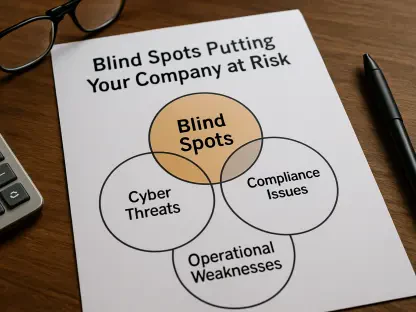Imagine a scenario where a single flaw in a widely used enterprise tool could compromise the security of countless organizations worldwide, exposing sensitive data to malicious actors. This is the alarming reality facing users of Oracle Identity Manager, a cornerstone for managing user identities and access in corporate environments. A critical remote code execution (RCE) vulnerability, identified as CVE-2025-61757 with a CVSS score of 9.8, has been actively exploited, raising urgent concerns across the cybersecurity community. This roundup gathers insights, opinions, and actionable tips from various industry sources and security professionals to dissect the severity of this flaw, explore differing perspectives on its implications, and provide guidance for affected organizations. The goal is to equip IT leaders and security teams with a comprehensive view of the threat and practical steps to mitigate risks.
Unpacking the Vulnerability: What Experts Are Saying
The technical foundation of CVE-2025-61757 has sparked intense discussion among cybersecurity researchers. Many highlight that this pre-authentication RCE flaw stems from logical errors in Java-based security filters within Oracle Identity Manager, allowing attackers to bypass authentication with alarming ease. One common observation is the simplicity of the exploit—manipulating a URL with a semicolon to access exposed REST APIs. This basic yet devastating oversight has led to widespread concern about the robustness of security mechanisms in enterprise software.
Differing views emerge on the root cause of such vulnerabilities. Some professionals argue that the issue lies in insufficient security testing prior to software releases, pointing to a gap in how major vendors prioritize vulnerability scanning. Others emphasize that the design of Java applications itself may be inherently prone to authentication bypasses, suggesting that this flaw reflects a broader architectural challenge. These contrasting opinions underscore the complexity of assigning responsibility and the need for multi-layered solutions.
A third perspective focuses on the timeline of discovery and disclosure. Several sources commend the rapid identification of the flaw by security researchers, noting that their proactive efforts likely prevented even greater damage. However, there is criticism regarding the delay in public awareness and the initial response from some enterprise users, highlighting a disconnect between discovery and actionable communication. This variance in viewpoints illustrates the urgency of improving coordination across the industry.
Real-World Impact: Diverse Opinions on Exploitation Risks
The active exploitation of this vulnerability, as evidenced by its inclusion in CISA’s Known Exploited Vulnerabilities (KEV) catalog with a patching deadline of December 12 for federal agencies, has alarmed many in the field. Cybersecurity analysts widely agree that the flaw poses a severe threat, potentially enabling attackers to compromise critical systems and access sensitive data. The consensus is that organizations failing to patch immediately face a heightened risk of breaches, with some likening the potential fallout to significant Oracle Cloud incidents reported earlier this year.
However, opinions diverge on the scale of the current impact. Certain industry watchers caution that the full extent of exploitation may be underreported, given the complexity of tracking attacks in diverse enterprise environments. They advocate for heightened vigilance and robust monitoring to detect unauthorized access. In contrast, other sources suggest that while the threat is real, the number of affected systems might be limited to those running outdated versions, implying that proactive updates could contain the damage more effectively than anticipated.
Another angle of discussion centers on sector-specific risks. Experts focusing on industries heavily reliant on Oracle Fusion Middleware, such as finance and healthcare, warn of targeted attacks due to the high value of data in these sectors. Meanwhile, some argue that smaller organizations with less mature security practices may be equally vulnerable, if not more so, due to limited resources for timely patching. This spectrum of concerns emphasizes the need for tailored risk assessments across different organizational contexts.
Systemic Issues in Enterprise Software: A Range of Perspectives
Beyond the immediate flaw, many in the cybersecurity space are debating broader systemic issues within Oracle’s software ecosystem and enterprise solutions at large. A recurring theme is the pattern of critical vulnerabilities in Oracle products, with some professionals pointing to historical flaws as evidence of recurring oversight in development processes. They argue that such incidents erode trust in major vendors and call for stricter accountability measures.
On the other hand, a segment of industry voices contends that the problem extends beyond a single vendor, reflecting a wider challenge in Java security design. These experts note that authentication bypasses are not unique to Oracle, citing similar issues in other platforms as proof of a pervasive architectural weakness. Their perspective pushes for industry-wide reforms in how security filters are conceptualized and implemented, rather than focusing solely on vendor-specific fixes.
A more optimistic viewpoint comes from those who see this incident as a catalyst for change. Some professionals suggest that recurring flaws, while troubling, provide valuable lessons that can drive innovation in security architecture. They advocate for collaborative efforts between vendors, researchers, and organizations to develop more resilient frameworks, potentially preventing similar vulnerabilities in the future. This hopeful stance contrasts with more critical opinions, highlighting a spectrum of thought on addressing systemic challenges.
Mitigation Strategies: Tips from Across the Industry
When it comes to protecting against CVE-2025-61757, there is broad agreement on the importance of immediate action, with most sources urging organizations to apply the patch released on October 21 as part of Oracle’s security update. Cybersecurity teams are encouraged to prioritize this update across all affected systems, ensuring no outdated versions remain operational. This unanimous advice reflects the critical nature of the flaw and the ease with which it can be exploited.
Additional strategies vary based on organizational needs and expert focus. Several industry commentators recommend conducting thorough audits of software environments to identify unpatched instances of Oracle Identity Manager. They also stress the importance of monitoring network activity for unusual patterns that could indicate an ongoing attack. This proactive approach is seen as a vital complement to patching, especially in complex enterprise setups where updates might be delayed.
Another set of tips focuses on long-term resilience. Some professionals advocate for enhanced training programs to ensure IT staff are well-versed in vulnerability management and rapid response protocols. Others suggest fostering closer partnerships with security vendors and research communities to stay ahead of emerging threats. These diverse recommendations provide a comprehensive toolkit for organizations aiming to safeguard their systems against not just this flaw, but future vulnerabilities as well.
Reflecting on Shared Wisdom and Next Steps
Looking back, this roundup brought together a wealth of insights from various corners of the cybersecurity landscape, shedding light on the critical Oracle Identity Manager vulnerability known as CVE-2025-61757. The discussions revealed a shared recognition of the flaw’s severity, coupled with diverse perspectives on its root causes, real-world implications, and the broader systemic issues at play. From urgent calls for patching to debates over Java security design, the collective wisdom underscored the multifaceted nature of the challenge.
Moving forward, organizations are advised to not only implement the recommended patches but also invest in continuous monitoring and staff education to bolster defenses. A key takeaway is the importance of viewing this incident as part of a larger pattern, prompting a reevaluation of trust in enterprise software and a push for stronger industry standards. For those seeking deeper understanding, exploring resources on Java security practices and vendor accountability could provide valuable context. The path ahead demands sustained collaboration and vigilance to ensure such critical flaws become lessons learned rather than recurring threats.









